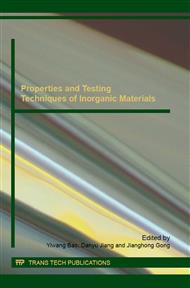p.462
p.466
p.472
p.477
p.482
p.486
p.493
p.498
p.502
Study on the Threshold Value and Test Methods for Chloride Ion Content in Sea Sand
Abstract:
The building sand is mainly composed of river sand at early stage. Recently, with the depletion of river sand, the new mined river sand cannot meet the demands for building sand. The sea sand is resourceful and can remedy the deficiency of sand for construction. However, the sea sand contains high content of chlorine salt, shell and lightweight matters. They are harmful for the strength and durability of concrete and will lead to premature corrosion of rebar. This will endanger the safety of construction. The studies demonstrate that high content of chlorine salt in sea sand is the main factor led to the deterioration of sea sand concrete. Therefore, in order to ensure the safety of construction, the threshold value of chloride content is specified in standards about concrete and aggregate. And methods testing the content of chloride ions are provided. However, the criterion in different standards differs from one another, which means their different viewpoints about the harm of chloride ions. In this work, the threshold value and test methods of chloride ion content for the building sand in the national standards and the international standards are summarized. The research has great significant for setting standards about sea sand, determining the rational threshold value of chloride ion content and improving the method testing the content of chloride ions.
Info:
Periodical:
Pages:
482-485
Citation:
Online since:
February 2016
Authors:
Keywords:
Price:
Сopyright:
© 2016 Trans Tech Publications Ltd. All Rights Reserved
Share:
Citation:


